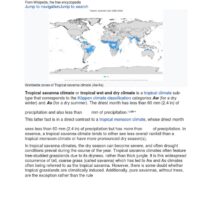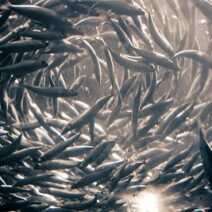The intricate relationship between food production and climate change has become a focal point of contemporary environmental discussions. In recent years, the emergence of cultured meat has garnered significant attention from both scholars and consumers alike. This innovative alternative to traditional animal agriculture promises not only to satiate our appetites but also to alter the trajectory of greenhouse gas emissions associated with livestock farming. However, before we delve into the multifaceted implications of cultured meat, it’s essential to comprehend the environmental ramifications of conventional meat production.
Animal agriculture is a leading contributor to climate change. Livestock farming accounts for approximately 14.5 percent of global greenhouse gas emissions, primarily in the form of methane, nitrous oxide, and carbon dioxide. The environmental degradation resulting from this sector is staggering: deforestation, water overconsumption, and biodiversity loss are just the tip of the iceberg. In light of these realities, the emergence of cultured meat presents a compelling narrative—a potential paradigm shift in how we conceptually approach our diets and their impact on the planet.
Cultured meat, also known as lab-grown meat or cell-based meat, is produced by cultivating animal cells in a controlled environment, bypassing the need for traditional livestock farming entirely. This process not only reduces the ethical concerns surrounding animal welfare but also addresses the environmental footprint associated with meat production. The methodology for creating cultured meat encompasses advanced biotechnological techniques, including tissue engineering and cell culture. With these innovations, the potential for optimizing resource utilization becomes remarkably pronounced.
One of the most alluring prospects of cultured meat lies in its ability to significantly curtail greenhouse gas emissions. Studies suggest that cultured meat could reduce emissions by 78-96 percent compared to conventional meat production. This dramatic reduction is achieved by eliminating the resource-intensive practices, such as land use, grazing, and the extensive water requirements of livestock farming. Moreover, as cultured meat technology advances, the efficiency of production is poised to improve, further amplifying its sustainability potential.
Moreover, the cultivation of meat cells can be carried out using far less land than traditional agriculture. The United Nations Food and Agriculture Organization estimates that we would need to cultivate additional arable land equivalent to the area of Brazil by 2050 to meet global meat demand if we continue with conventional practices. Cultured meat, on the other hand, could mitigate the dependency on land-intensive agriculture, thereby preserving vital ecosystems and combating deforestation.
Water scarcity is another pressing issue that cultured meat technology seeks to address. Traditional meat production consumes an exorbitant amount of water—approximately 15,000 liters of water are needed to produce just one kilogram of beef. In contrast, cultured meat necessitates far fewer resources. Some estimates indicate that cellular agriculture could result in a reduction of water consumption by up to 90 percent. In a world plagued by water scarcity, this astonishing efficiency could significantly alleviate pressure on freshwater sources.
Another critical aspect of this alternative meat source is the potential to create a circular economy within the agricultural sector. By employing waste byproducts from food production and food processing as a nutrient source for cultured meat, manufacturers can promote sustainability while simultaneously diminishing the greenhouse gases those waste products would typically emit. Additionally, as production systems become more sophisticated, it is conceivable that cultured meat operations could be integrated into urban environments, minimizing transportation emissions and fostering localized food systems.
Despite the promising advantages of cultured meat, societal perceptions pose a significant challenge to widespread acceptance. Many consumers harbor a natural aversion to anything that deviates from traditional food sources, often perceiving lab-grown meat as unnatural or even grotesque. This hesitation is compounded by a lack of understanding regarding the technological processes involved in cultured meat production, leading to misconceptions. Overcoming these social barriers will require effective education and transparent communication from producers regarding the safety, nutritional values, and environmental benefits attributed to cultured meat.
Regulatory frameworks will also play an essential role in the broader adoption of cultured meat. Governments across the globe will need to establish clear guidelines to assess and monitor the safety and efficacy of these products before they can enter the market. Navigating the complexities of regulatory approval will be an essential step in fostering consumer trust and ensuring that these innovative products can be integrated into our food systems without compromising public health.
While the technological advancements in cultured meat production are promising, it is crucial to recognize that this solution is not a panacea for all environmental challenges associated with the food system. It is imperative to consider ways in which cultured meat can coexist with other sustainable agricultural practices, such as plant-based diets and regenerative farming. The future of food must be multifaceted and inclusive of various approaches that address sustainability within the complex web of food production.
In summation, cultured meat embodies a radical departure from conventional animal agriculture. By significantly reducing greenhouse gas emissions, minimizing land and water use, and promoting waste valorization, it holds the promise of ameliorating our climate crisis. However, the success of this technology hinges not only on scientific advancements but also on our willingness to embrace change and educate ourselves and others about its benefits. Cultured meat is not merely about rethinking our dietary choices; it symbolizes a more profound shift in the cultural fabric of food production, one that poses a vital question: can we genuinely alter our relationship with food and foster a sustainable future for generations to come?







